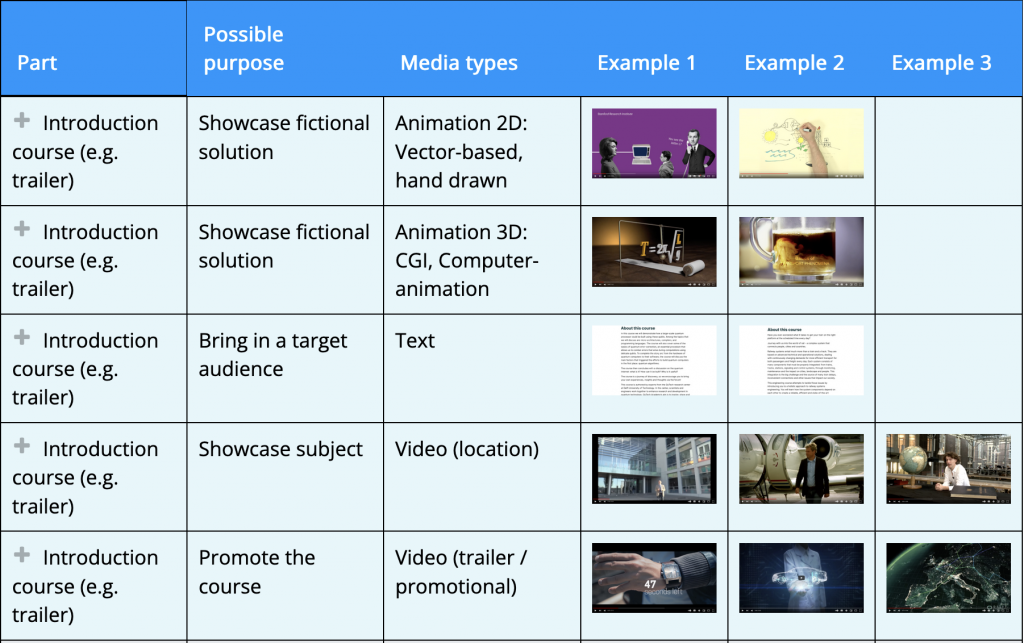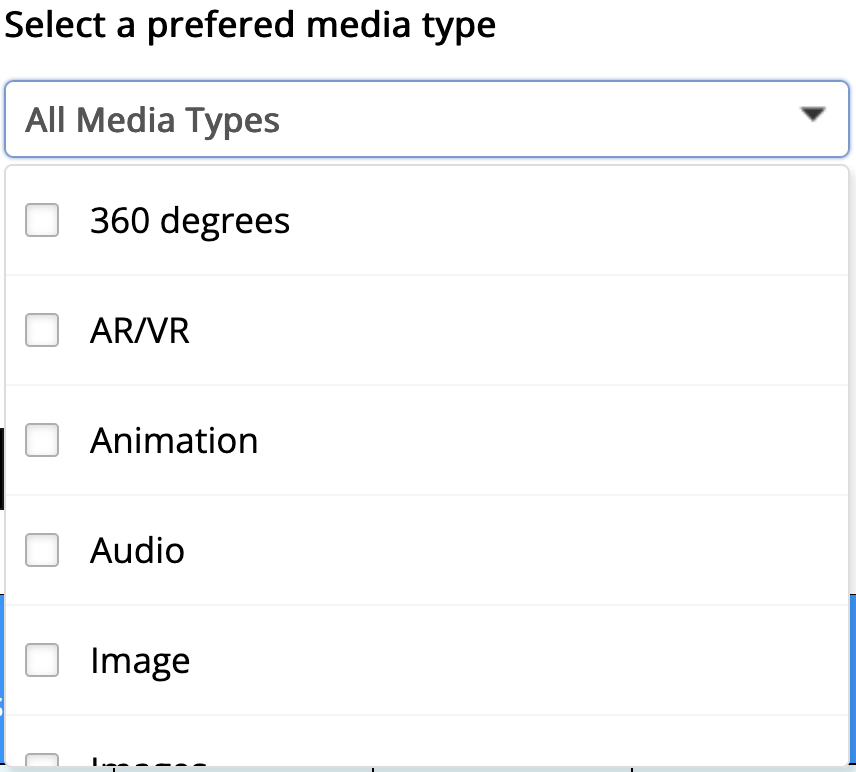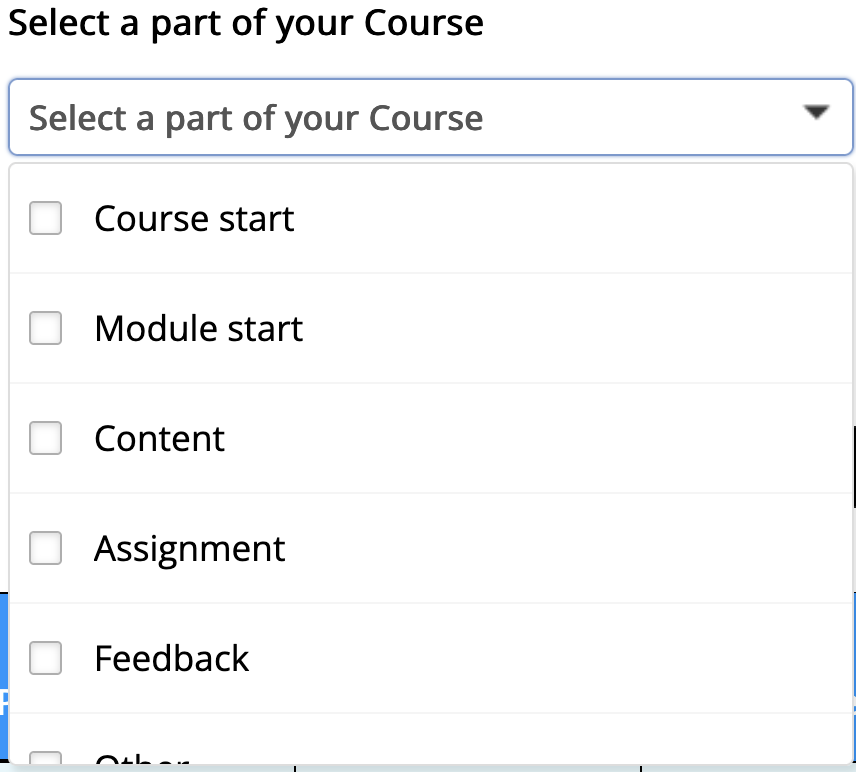by Pim van Schöll, Delft University of Technology, the Netherlands.
Does more video always mean you get a better course? At the TU Delft we launched a tool to (re)think and reflect on choice of media. Let me share my story and introduce our solution to widen the scope of possibilities for creating media: the purpose of media tool.
I was meeting with a course team. We were evaluating their course and they needed assistance: their assessment felt inefficient, but they were afraid to lose the personal touch if they would not give individual written feedback to every single one of their students. A few days before that I encountered a few good examples of recorded, personal feedback videos and before I realised, I said enthusiastically: “you could record a video where you compare and discuss all assignments!”
The course team recently experienced the power of video during the last course they ran, so they already started to include video in their course a lot: a video for the module introductions, the knowledge clip videos, a video for recapping the weekly modules and a video to summarise discussions. And now, they wanted to use video for discussing the individual assignments as well. But does more video mean tey would get a better course?

There is not one answer to what is right or wrong to optimize learning. And that is why this type of question is always difficult: what is the best means to carry your message for learners? For many, the choice for a media format is dictated by factors such as available resources, convenience, and experience but less by the educational fit of a media format. To inspire course creators, lecturers, and education staff, we introduced the purpose of media tool. Wiebe Dijkstra and I presented the first prototype of this dynamic table during the Conference “Media & Learning Online: Autumn 2021” and had an international panel reflect on the use of this. The tool contains over 100 different examples of media. Not just to inspire, but also to guide people in their choices for different media types: images, animation, VR, audio or video from all kinds of different perspectives including possible purpose and effort to create a certain example.
How to use “Purpose of media”
This tool should mainly be used to get inspired and start a conversation. Let’s explore the different functionalities of the tool by discussing three different perspectives on learning design. 1) the content perspective, 2) the lecturer perspective 3) the learner perspective.
1. Content perspective: Get inspired and match (new) media types to content activities.

When you consider media from the content perspective, you can get inspired and see what different media types can achieve. As an example, filter on media types by choosing “360 degrees” at the “Select a preferred media type”. You will see different media examples, all with a similar purpose: show or inspire learners by immersing them in an environment. This is different when you select “image” or “text” as media type. Those media types are more often used to provide overviews, explain, or transfer knowledge. Have a look at the different examples, and if you decide on a media type, be critical and match your own purpose for the content to the example!
2. Teacher perspective: Get informed on resources and effort.
What resources can you spend, and what effort do you want to make? With the table you can make an informed consideration of different formats. Filter on the effort to create something yourself and compare this to a project size at the TU Delft NewMedia Centre. We made an estimation for typical projects we run and assessed the examples accordingly. Same goes for the Do-it-yourself effort, based on previous experience and available support, a certain format can be perceived as less effort at this moment. Use the estimations to make your own considerations and remember: if you like it and want to invest in a specific format, go for it and enjoy it! This tool gives a general estimation, don’t let it hold you back.

3. Learner perspective: Reflect on different media types for the learning objectives.
The example I just described, where we would use video for every content type, would not hold up very well when we consider a learner perspective. Your learners don’t just watch one video, they also look at the modules before and after this one and learners carry out assignments that you provide them. The table can help you think about individual formats, but always keep the entire course in mind. We can use the tool to look at different options for the different course parts. For example: filter on “Select a part of your Course” to look at examples for the module start. You will see different preferred media types like audio, 360 video or AR/VR and see what kind of needs you can fulfil by browsing the examples.

Back to the course team I was sitting with, we found out that learners like the informal setting of a feedback video via previous courses. But more video would not mean we would get a better course. So, we reflected on the other content types and changed some to images or text. The purpose of media tool inspired me to reflect on the number of videos. Do you want to explore the dynamic table yourself? then have a look at the Purpose of Media tool.
Did you get inspired to talk more in the purpose of media? Feel free to reach out! We are happy to discuss it in more detail and look at future possibilities for this tool!

Author
Pim van Schöll, Educational Designer, Delft University of Technology, the Netherlands












